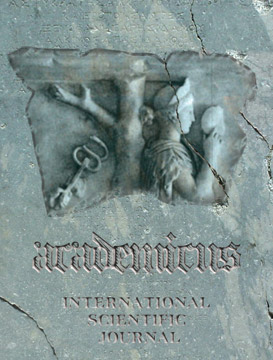Title:
The Functionality and Comparisons of BSC and Alternative Theories in Organisations: Business Perspective
Full Reference List:
| 1. | Mehmet, C. K. and David, Fall 2007. A Balanced Scorecards Application in Health care: A case study: Journal of health care Finance. |
| 2. | Amit, R. and schoemaker, P. J. H. 1993. Strategic assets and organisational rent. Strategic Management Journal, 14: 33-46. |
| 3. | Barney, J. 1991. Firm resources and sustained competitive advantage. Journal of Management, 27:99. |
| 4. | Berman, S. L., Wicks, A. C., Kotha, S. and Jones, T. M. 1999. Does stakeholder orientation mather? The relationship between stakeholder management models and firm performance. Academy of Management Journal, 42: 488-507. |
| 5. | Charnchai, T. and James, G. P. 2007. Shareholder value ideology, Reciprocity and decision making in moral dilemmas. Journal of management issues, 19, N0. 3, pp. 379-396. |
| 6. | Conner, K. R. 1999. A historical comparison of resource-based value theory and five schools of thought within industrial organisation economics: Do we have a new theory of the firm? Journal of Management, 17: 124-154. |
| 7. | Corazzini, A. J. 1967. When should vocational education begin? The Journal of Human Resources, 2, 41-50. |
| 8. | Das, T. K. and Teng, B. 2000. A Resource theory of strategic Alliances. Journal of management, 26, N0. 1, 31 61. |
| 9. | Drucker, P. 1954. The practice of Management. New York, NY: Harvard Business Press. |
| 10. | Flore, B. 2004. A resource-based approach to performance and competition. An overview of the connections between resources and competitions. IAG working paper. |
| 11. | Griffith, J. and Alexander, J. 2002. Measuring Comparative Hospital Performance. Journal of Healthcare Management No 47. 1: 41-47. |
| 12. | Kaplan, R. S. and Norton, D. P. 2001. ‘Strategic performance measurements and management in non-profit organisations’ Nonprofit management and leadership, 11(3), 353-370. |
| 13. | Mahoney, J. T., and Pandian, J. R. 1992. The resource-based view within the conversation of strategic management. Strategic Management Journal, 17: 549-569. |
| 14. | Mark, B. 1976. The Empirical Status of Human Capital Theory: A slightly Jaundiced Survey. Journal of Economic Literature, 14, N0 3 pp. 827-855. |
| 15. | McCloskey, D. N. The rhetoric of economics university of Wisconsin Press, Madison, WI, 1995. |
| 16. | McGrath, R.G. 1996. The trouble with competence: opportunities and limitations in the adolescence of the resource-based view. Paper presented at the annual meeting of the Academy of management, Cincinnati, OH. |
| 17. | Musaraj, A. (2011). Albania, the human factor and sustainable development: a lesson from the present. Academicus International Scientific Journal, 2(04), 35-41. |
| 18. | Musaraj, A. (2012). Tourism development, touristic local taxes and local human resources: A stable way to improve efficiency and effectiveness of local strategies of development. Academicus International Scientific Journal, 3(06), 41-46. |
| 19. | O’Toole, J. 1991. Do good, do well: The business enterprise trust awards. California management review 33: 9-24. |
| 20. | Peteraf, M. A. 1993. A resource-based view. Strategic Management Journal, 14: 179-191. |
| 21. | Peteraf, M. and Bergen, M. 2003. Scanning dynamic competitive landscapes: a market based and resource-based framework, Strategic Management Journal, 24, 1027-1041. |
| 22. | Schultz, T. W. 1981. Investing in People: The economics of education quality. Los Angeles: University of California Press. |
| 23. | Schultz, T. W. 1993. The economic value of education. New York: Columbia University Press. |
| 24. | Scott, R. S. 1996. Foundation of a field of Inquiry. American Educational Research Association. 66, N0 3, pp. 341-359. |
| 25. | Wernerfelt, B. A. 1984. A Resource-based view of the firm. Strategic Management Journal, 5, 171-180. |
Back to article
Academicus
International Scientific Journal
pISSN 2079-3715
eISSN 2309-1088
Address:
Sheshi i Flamurit, Rruga Muze
Al-9401 Vlorë, Albania
Tel: +355 68 60 60 555
info@academicus.edu.al
https://academicus.edu.al


